Helping the next generation take action to reduce, reuse, and recycle.
Helping the next generation take action to reduce, reuse, and recycle.
We live in a unique and delicate ecosystem that is continuously threatened by humans. Returning high-quality recycling to redemption centers reduces litter in public places and helps keep our environment healthy and beautiful.

By recycling, you conserve valuable natural resources. Using recycled materials to make new products saves energy and reduces the amount of air and water emissions produced during the manufacture of new products.
Getting children excited by — and participating in — recycling is vital to California’s (and our planet’s) future. Encouraging best practices now ensures that the next generation will be thoughtful stewards of our natural resources.
Californian’s throw away about 5 pounds of trash per day. Proper recycling keeps valuable material out of the garbage stream and lowers the amount of waste sent to landfills. We all benefit from that!
For most California schools recycling and organics recycling isn’t just good practice, it’s the law. Learn more here.
Most recycling programs accept materials in four main categories: paper, glass, metal, and plastic. To make sure your school is recycling correctly, always follow your local city or county guidelines and check with your waste hauler about what’s accepted.
Recycling right helps reduce waste—and it’s a great way to get students involved. Kids love to participate in recycling and composting when they understand how it helps the planet.
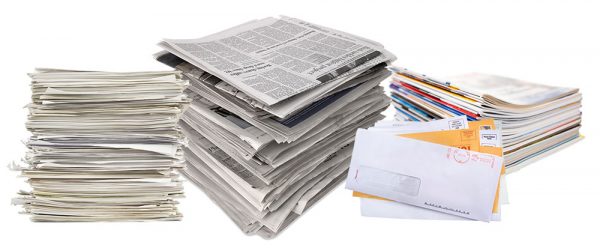
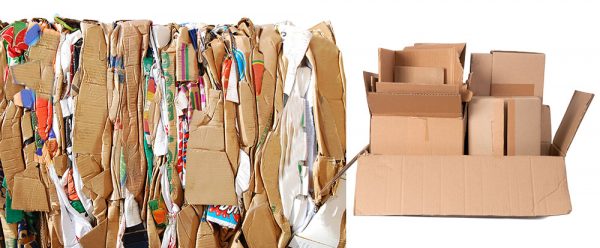
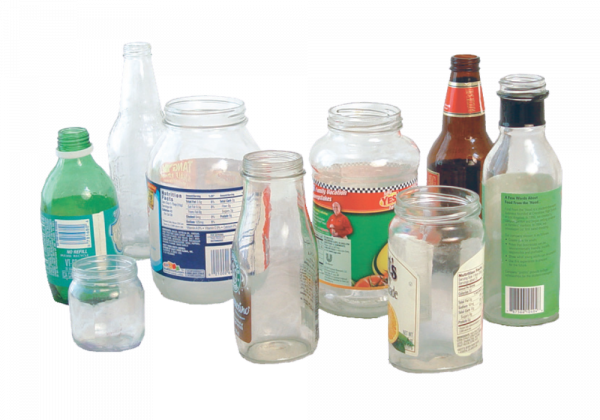
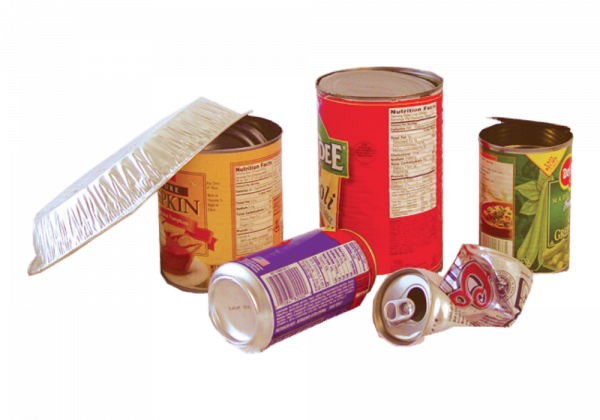
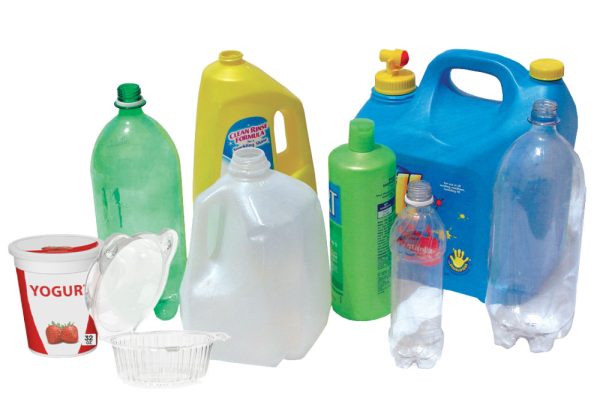
We offer free printable posters to place with your recycling, organics, and garbage collection containers so everyone knows what belongs in what container.
Setting up recycling is a simple matter of organization and commitment and you can always reach out to your hauler’s recycling coordinator for resources to help you develop a successful program.
Take the initiative and get a program started in your school today by following these five simple steps.
A waste assessment is a survey of what recyclable materials are discarded and where. Take a stroll through your school and record what types of waste are discarded in each area. This walk-through lets you figure out what containers you’ll need. Here are typical materials that be recovered from different areas in most schools:
This is also a great opportunity to determine if your school should start a CRV program to collect and return eligible beverage containers for cash. Read more about CRV here.
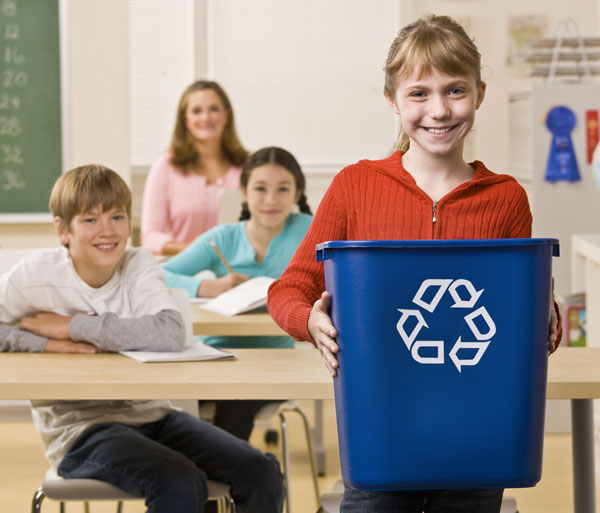 Based on the results of the waste assessment, put recycling containers for each material in each area. To begin, you might want to focus your efforts where you have found the most waste.
Based on the results of the waste assessment, put recycling containers for each material in each area. To begin, you might want to focus your efforts where you have found the most waste.
Location and good labeling are critical to every recycling program. Be sure that containers are well-marked. For public areas, you might want to consider special containers that indicate the type of recyclable with a hole or a slot. This will reinforce the goals of your program and reduce contamination (mixing) of recyclables.
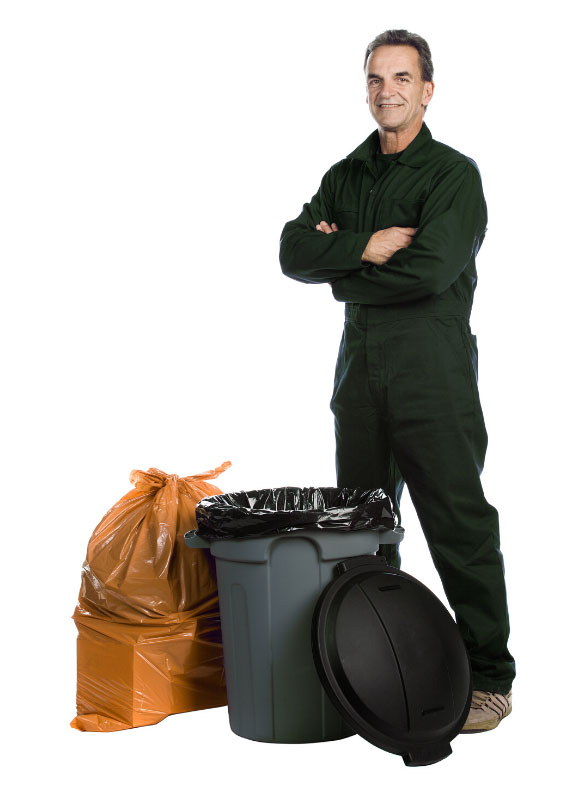 Once you know what will be collected and where, get your custodial staff and groundskeepers involved. Have a meeting to explain to them the importance of recycling and to answer their questions. Show them where to locate new containers, how to collect waste separately, and where to take separated materials.
Once you know what will be collected and where, get your custodial staff and groundskeepers involved. Have a meeting to explain to them the importance of recycling and to answer their questions. Show them where to locate new containers, how to collect waste separately, and where to take separated materials.
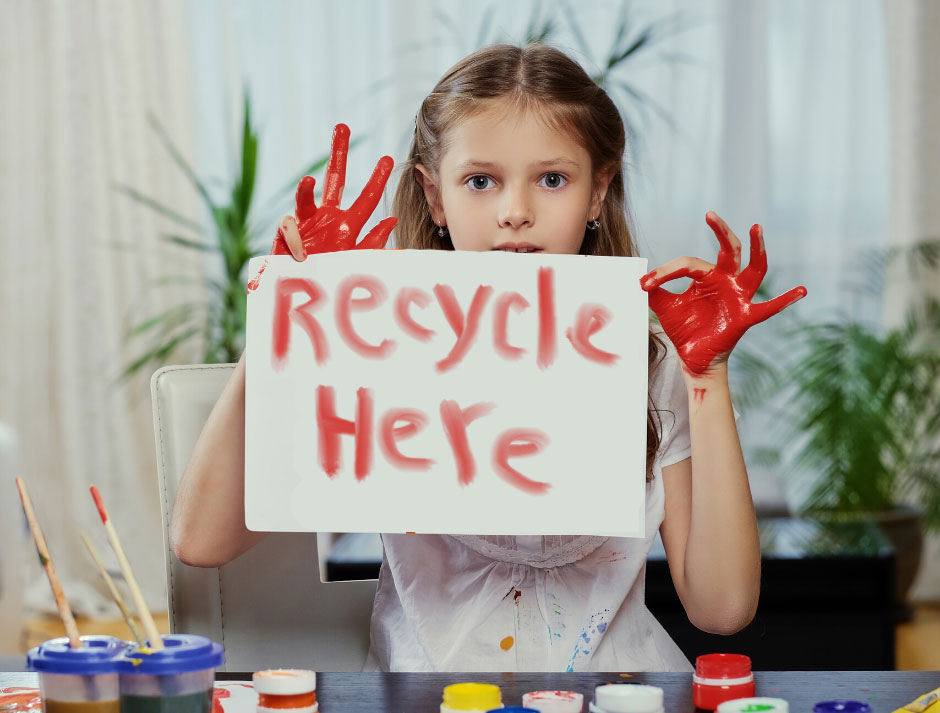 Once your container, labels, and collection procedures are in place, communicate your program to students and employees.
Once your container, labels, and collection procedures are in place, communicate your program to students and employees.
Host a kick-off party for teachers and administration.
An assembly is a great way to start your program. Then, get students involved by introducing classroom activities about recycling. Have them make posters and instructions to share.
Remember: one presentation is not enough. Be sure to reinforce the goals, principles, and procedures of your program. This will ensure that your procedures are being followed, will help people remain interested, and provide a forum for questions and new solutions. You can also put information or notices in e-mail, on the school’s web site, or in the school newspaper.
Create a system for keeping track of the amount of materials your program collects. This will help you know you’re receiving proper compensation for your materials and will help you take appropriate action if volumes decrease. Be sure to get your custodial staff involved in this process, and develop a feedback system so that they can let you know where contamination is a problem.
Recycling is circular. A material is manufactured into a product which goes to a store, where you buy it. You use the product — and hopefully reuse it— then put it in your recycling cart. From there it is collected and taking to a processing plant where it turned back into base materials which a manufacturer uses to create something new. And the cycle starts again.
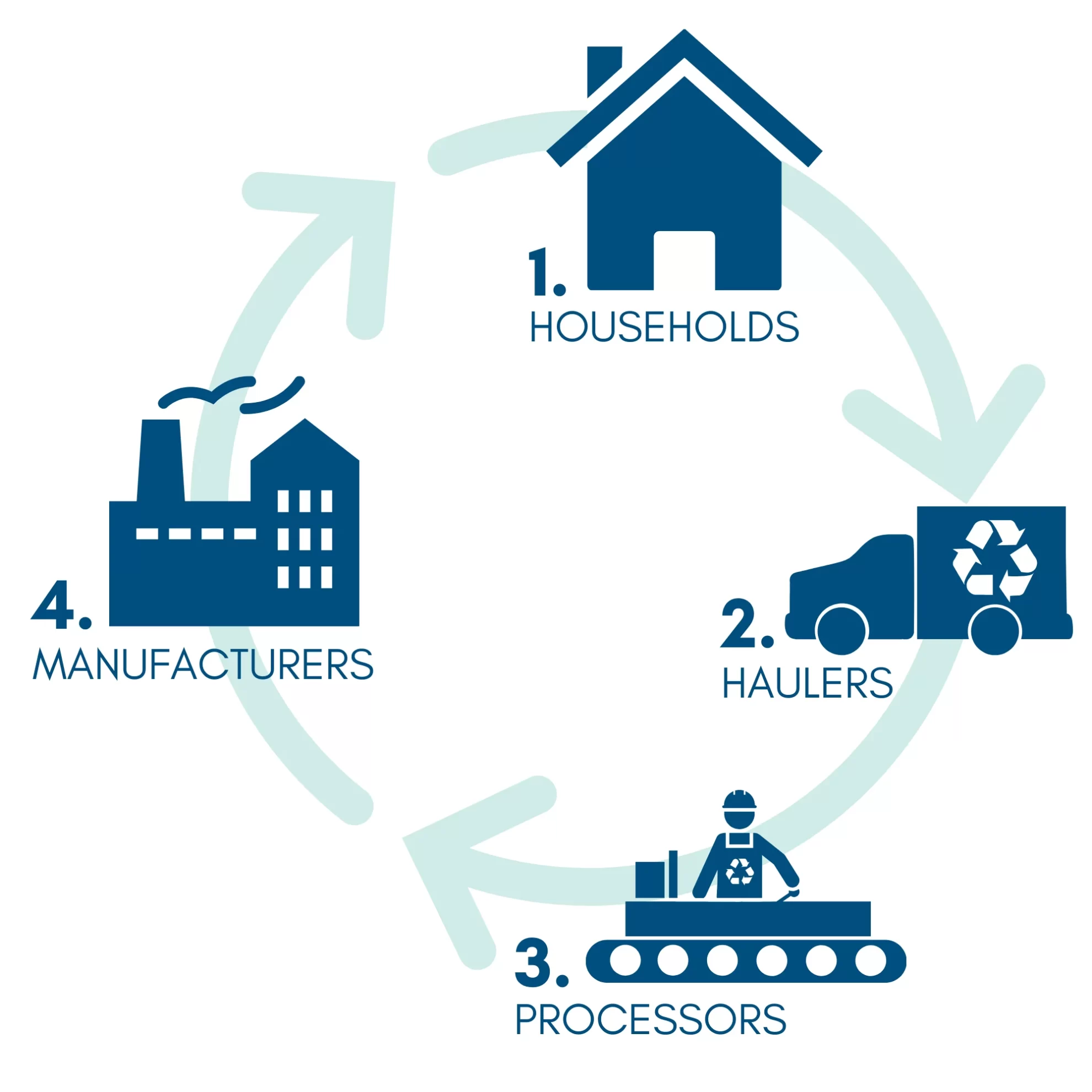
The MRF (pronounced “mirf”) is an intermediate processing center— sorting mixed recyclables into separate categories: newspaper, cardboard, other mixed papers, glass, steel cans, aluminum cans, PET plastics, HDPE plastics, and more. Once the recyclables are sorted (and compacted into bales), they are then ready to be shipped to businesses to be made into new products.
Most communities in the High Desert and Mountain area are served by the Victor Valley Materials Recovery Facility (MRF)
The MRF is the “middleman” between residents who separate recyclables, and the industries which use recyclable materials to make new products.
The MRF is owned by the Town of Apple Valley and City of Victorville; administered by the Mojave Desert and Mountain Recycling Authority; and operated by Burrtec Waste Industries.
17000 Abbey Lane, Victorville, CA
Hours:
Monday – Friday 8am – 4pm
Saturdays 8am – 12pm
Phone: (760) 241-1284
This guide introduces you to the MRF and how recycling materials are processed at the facility.
Watch as Joel Greene of Curiosity Quest provides a family-friendly tour of the Victor Valley MRF.
You pay a deposit every time you purchase eligible beverage containers, don’t you want that back?
Every time you purchase an eligible beverage container from a retailer in California, you pay a nickel, dime or quarter deposit on that container. The California Redemption Value, or CRV, is the deposit return system that allows you to return those empty beverage containers to a recycling location to get back the deposit you paid.
Collecting your school’s beverage containers and returning them to a redemption center is a great way for kids to learn about the value of recycling and make money for your school.
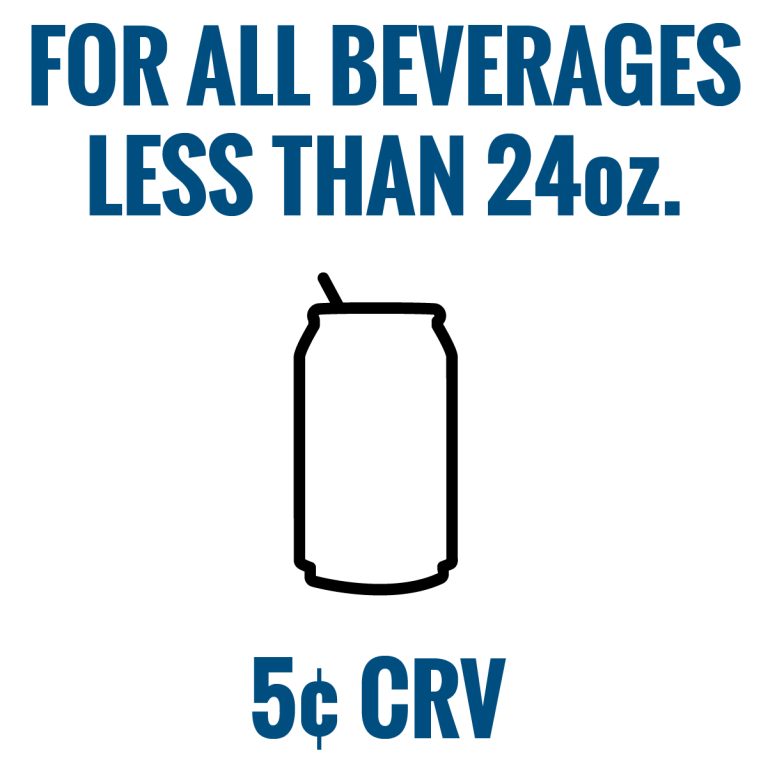
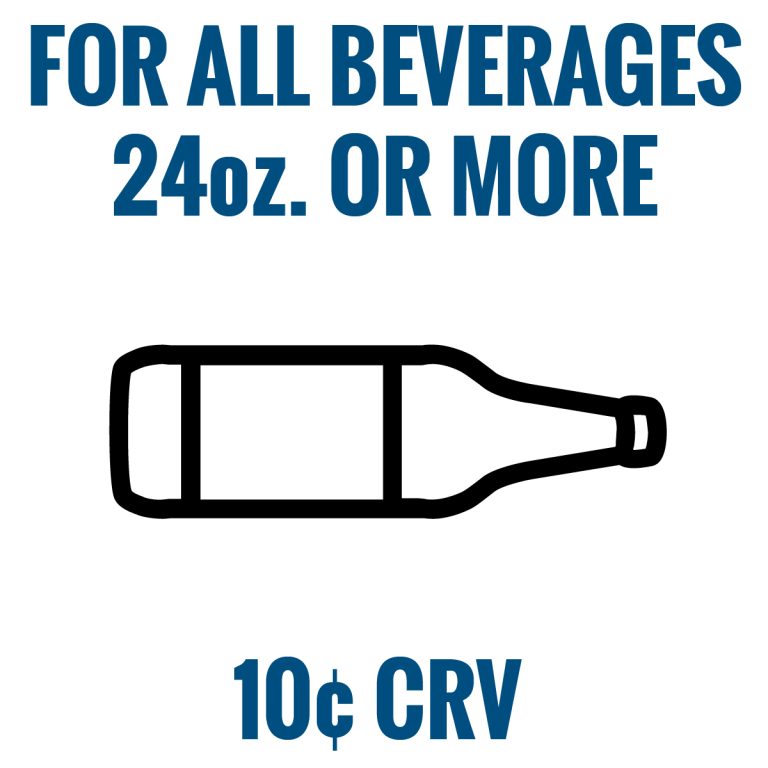
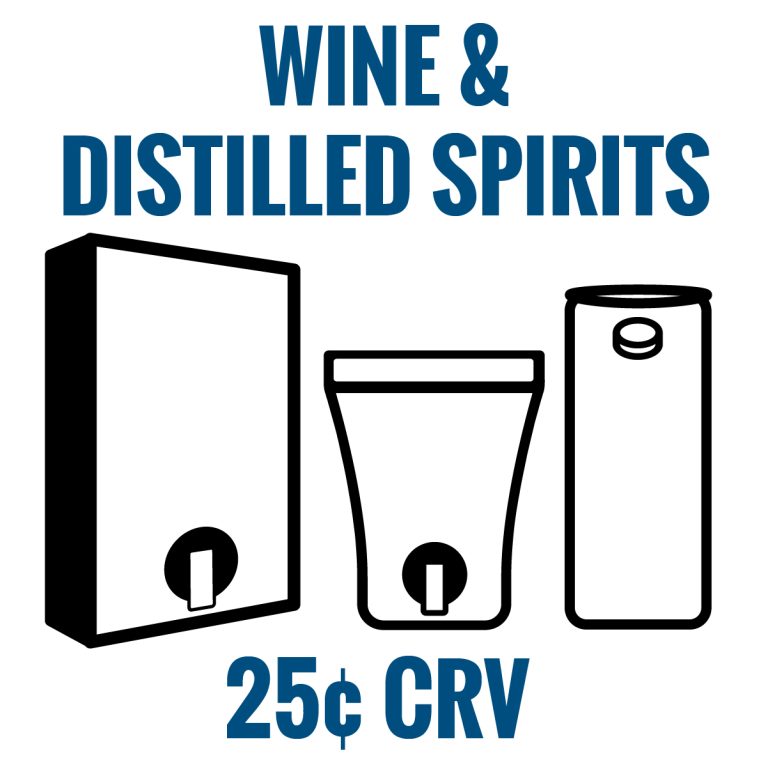
Glass, aluminum, bimetal and plastic containers including:
If you have less than 50 containers of one type, your refund will be a nickel, dime, or quarter (depending on size and type) for each container. If you bring more than 50 containers of a particular type, your containers are weighed and converted for refund value.
You may bring up to 100 pounds of aluminum and plastic or 1,000 pounds of glass on a single visit to a Recycling Center.
Victor Valley residents can drop off CRV materials at the Victor Valley Recycling Drop-Off & Buy Back Center, open Monday to Friday from 8 a.m. to 4 p.m at 17000 Abbey Lane, Victorville. Call (760) 241-1284 for more info.
You can also visit the CalRecycle website to find a map showing over 1,200 Beverage Container Recycling Centers in California.
If you can’t find a nearby Recycling Center, try searching for retailers that redeem in-store. Thousands of grocery stores and other retailers statewide have pledged to accept empty beverage containers and provide deposit refunds. If your store is not included ask about their plans to redeem containers. Some stores have elected to pay a $100 daily fee to become exempt.
What if there isn’t a recycling redemption center near me?
The laws covered below apply to a “business” defined as any commercial or public entity including but not limited to, a firm, partnership, proprietorship, joint-stock company, corporation, or association that is organized as a for-profit or non-profit entity, strip mall (e.g. property complex containing two or more commercial entities), industrial facility, school, school district, community colleges, special district or a federal, state, local, regional agency or facility.
If your business qualifies, please read through these carefully and contact your local recycling coordinator to make sure your business is in compliance.
SB 1383 is a new law that requires the state to dramatically expand its composting abilities and reduce the amount of waste sent to landfills.
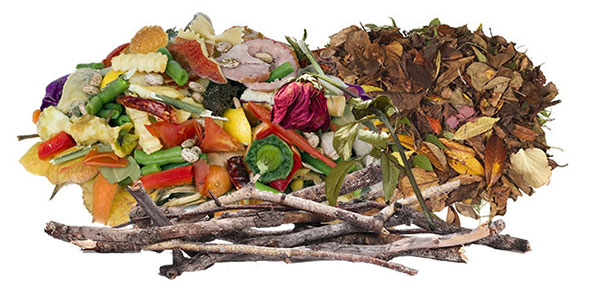 Organic waste (organics) such as food waste, green waste, landscape and pruning waste, and nonhazardous wood waste make up half of what Californians dump in landfills. When organic waste is sent to landfill, it decomposes anaerobically (without oxygen) which creates methane — one of the most potent greenhouse gases in Earth’s atmosphere. Methane is a short-lived climate pollutant that is 84 times stronger than carbon dioxide over a 20-year period. NASA recently captured satellite images
Organic waste (organics) such as food waste, green waste, landscape and pruning waste, and nonhazardous wood waste make up half of what Californians dump in landfills. When organic waste is sent to landfill, it decomposes anaerobically (without oxygen) which creates methane — one of the most potent greenhouse gases in Earth’s atmosphere. Methane is a short-lived climate pollutant that is 84 times stronger than carbon dioxide over a 20-year period. NASA recently captured satellite images
of California landfills and published an inventory showing them as super emitters of methane.
Keeping organic material out of landfills will slow the rate of greenhouse gas accumulation and begin to reduce their impacts.
Food recovery means collecting edible food that would otherwise go to landfill and redistributing it to feed people in need. Californians send 11.2 billion pounds of food to landfills each year, some of which was still fresh enough to have been recovered to feed people in need. One in 5 children go hungry every night in California – redirecting perfectly edible food to feed those in need can help alleviate this. Feeding hungry people through food recovery is the best use of surplus food and a vital way for California to conserve resources and reduce waste thrown in landfills.
To reduce food waste and address food insecurity, surplus edible food will instead go to food banks, soup kitchens, and other food recovery organizations and services to help feed Californians in need.
Everyone: cities, trash haulers, processors and generators like businesses and single/multifamily residents are required to keep organic materials out of the landfill and can receive fines if they do not comply.
If you own a business or apartment/condo complex (of five units or more), you are required to:
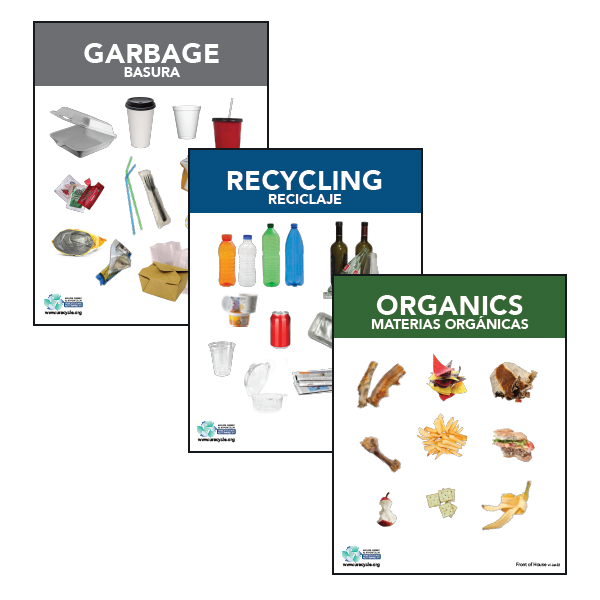
We offer free 8.5×11 pdf downloadable signage for front and back of house use. Find them here.
Printable signage is also available free online from CalRecycle’s PR Tool Kit.

Learn more about SB 1383 by visiting the California Department of Resources Recycling and Recovery website.
If your business produces four (4) cubic yards or more of solid waste per week, California law requires that you recycle.
In 2012, California adopted AB 341, the Mandatory Commercial Recycling Measure to expand programs to recover recyclable materials from the commercial sector. The purpose of the law is to reduce greenhouse gas emissions by diverting commercial solid waste from landfills and expand opportunities for recycling in California. It also creates jobs by providing materials for recycling manufacturing facilities, provides opportunities for businesses or multifamily complexes to save money, and creates a healthy environment for the community and future generations by recovering natural resources.
Assembly Bill 341 requires California businesses, including public entities, and multifamily complexes of five (5) units or more that generate four (4) or more cubic yards of solid waste per week to recycle.
Under the AB 341 law, businesses can take one or any combination of the following in order to reuse, recycle, compost or otherwise divert solid waste from disposal:

Learn more about AB 341 by visiting the California Department of Resources Recycling and Recovery website.
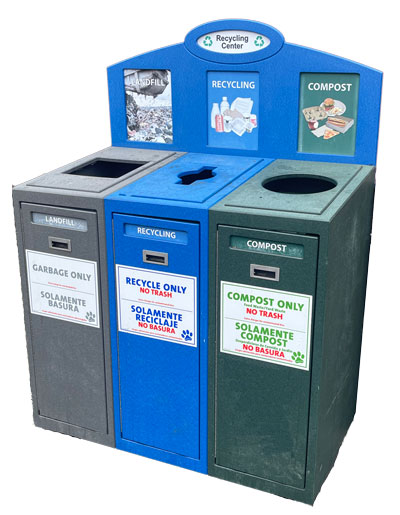
Effective July 1, 2020, businesses that sell products meant for immediate consumption must provide recycling and organics containers at front-of-house to collect waste generated by customers from products they purchase and consume on the premises.
AB 827 is intended to educate and involve consumers in achieving the state’s recycling goals by requiring businesses to make recycling and/or organic recycling bins available to customers.
AB 827 requires California businesses that generate two or more cubic yards of commercial solid waste per week and sell products meant for immediate consumption* provide recycling and organics containers alongside trash bins at front-of-house to collect waste generated by customers from products they purchase and consume on the premises.
* Full-service restaurants do not have to provide properly labeled containers for patrons but must provide properly labeled containers next to trash containers for employees to separate post-consumer recyclables and organics for customers.
Place containers for recycling and organics adjacent to trash containers where they are visible and easily accessible to customers. Containers must be clearly marked.

We offer free 8.5×11 pdf downloadable signage for front and back of house use. Find them here.
Printable signage is also available free online from CalRecycle’s PR Tool Kit.
If your business produces two (2) cubic yards or more of solid waste per week, California law requires that you recycle your organic waste.
In 2014, California adopted AB 1826, the Mandatory Commercial Organics Recycling Measure to divert organic waste generated by businesses and multifamily dwellings of five or more units. Mandatory recycling of organic waste is the next step toward achieving California’s aggressive recycling and greenhouse gas emission goals. Greenhouse gas emissions resulting from the decomposition of organic wastes in landfills have been identified as a significant source of emissions contributing to global climate change.
Assembly Bill 1826 requires California businesses, including public entities, and multifamily complexes of five (5) units or more that generate two (2) or more cubic yards of solid waste per week to arrange for an organic waste recycling service.
 Organic waste (or organics) means food waste, green waste, landscape and pruning waste, nonhazardous wood waste, and food-soiled paper waste that is mixed in with food waste. Please note that unlike businesses, multifamily dwellings are not required to have a food waste diversion program.
Organic waste (or organics) means food waste, green waste, landscape and pruning waste, nonhazardous wood waste, and food-soiled paper waste that is mixed in with food waste. Please note that unlike businesses, multifamily dwellings are not required to have a food waste diversion program.
Under the AB 1826 law, businesses can take one or any combination of the following actions as long as it is in compliance with local ordinances and requirements:

Learn more about AB 1826 by visiting the California Department of Resources Recycling and Recovery website.
Your community may have mandatory commercial recycling ordinances with different thresholds or more specific business recycling requirements than the state law. Reach out to your hauler for specific requirements and resources to help your business become successful recyclers under the law.
School gardens provide an excellent opportunity for teachers to extend these lessons outside of the classroom to reinforce concepts about nutrient cycles, food production, decomposition, water conservation and more.
Composting is an effective and efficient way to dramatically reduce your school’s waste stream , while doing your part to reduce your carbon footprint. Organic material sent to landfill creates methane, a powerful greenhouse gas that contributes to the negative impacts of our changing climate. By making compost, you are creating a valuable soil amendment that you can use to benefit your landscape, boost plant growth and sequester carbon.
Both new and established gardens benefit from the use of compost and mulch. Many schools purchase compost when they initially establish their garden, then they start making their own compost. You can use grass clippings, yard trimmings, rotten vegetables, and in some cases even food scraps from the cafeteria and/or students’ lunches. While some schools choose to make compost piles in the garden, others compost with worm boxes right in the classroom!
Similar to “backyard” or home composting, schools can compost using an enclosed bin or tumbler, in an easily made bunker, or using a no-fuss pile. The key is to blend your feedstocks to achieve a balance of carbon and nitrogen, keep things damp but not saturated, and ensure adequate oxygen deep in the pile. The microbes will do the rest.
Visit our Composting page to learn more about the different methods of composting.
Visit CalRecycle’s Compost page to learn more about composting techniques.
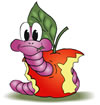 Download The Worm Guide: A Vermicomposting Guide for Teachers from CalRecycle to learn how to start and maintain a successful classroom worm bin. Includes the basics of vermicomposting, worm bin building plans, troubleshooting and fundraising tips, classroom activities, and useful case studies of other successful vermicomposting programs.
Download The Worm Guide: A Vermicomposting Guide for Teachers from CalRecycle to learn how to start and maintain a successful classroom worm bin. Includes the basics of vermicomposting, worm bin building plans, troubleshooting and fundraising tips, classroom activities, and useful case studies of other successful vermicomposting programs.
Check out CalRecycle’s Worm Facts for more information about Vermicomposting.
Visit our Composting page to learn more about the different methods of composting.
A wealth of information on how to start a school garden, linking school gardens to California Education Standards, funding, and so much more, is available from the California School Garden Network.
On this page you’ll find links to numerous educational resources on composting supporting the Composting Council’s International Compost Awareness Week which occurs during the first week of May each year.
The California Education and the Environment Initiative (California EEI) Curriculum teaches science and history-social science, using the environment as a context for learning. This engaging curriculum is designed to increase environmental literacy, and help students become critical thinkers, informed decision makers, and leaders for the future. The EEI Curriculum is available to California educators in print and online at no cost.
Source: California EEI
Fun recycling lesson plans teach about the importance of stewardship and conservation and connect to standards in science, math, and reading for grades 1–8. They use the popular 5E lesson plan model, so you know they’re hands on and easy to adapt for your classroom!
Source: WeAreTeachers.com
Try these media-rich lessons that explore the topics that connect technological, biological, and scientific fields. Lessons on topics such as recycling and waste management include multi-media presentations and worksheets for all ages.
Source: PBS LearningMedia
This Waste-Free Lunch activity helps students learn how to reduce, reuse, and recycle items in their school lunches. They provide activity instructions and printable materials — everything you need to get your class participating in a waste-free lunch day. Grades 1-8.
Source: U.S. Environmental Protection Agency
The Mojave Environmental Education Consortium (MEEC) aims to improve the environmental literacy of students, teachers, and communities of the Mojave Desert Region by actively providing educational resources including transportation and mini-grants, and environmental library, curriculum and scholarship information, a speakers’ bureau, and teacher links focused on the High Desert environment.
The City of Victorville Environmental Programs Division can help you set up a school recycling program and offers free tours and in-class presentations. Call their Recycling Hotline at (760) 955-8615 for help with your recycling.
Learn more at the victorvillca.gov website.
Closing the Loop is CalRecycle’s interdisciplinary standardized K-6 curriculum emphasizing waste prevention, recycling, composting, and vermicomposting through hands-on activities.
CalRecycle also maintains an instructional materials page and more educational resources and information.
The also offer waste reduction strategies for each department within a School District.
The California Environmental Protection Agency’s Education and the Environmental Initiative (EEI) is a K-12th grade curriculum comprised of 85 units teaching select Science and History-Social Science academic standards. Each EEI Curriculum unit teaches these standards to mastery using a unique set of California environmental principles and concepts.
The U. S. Environmental Protection Agency lists environmental education resources that can be ordered online, by telephone, or downloaded.
The US EPA’s waste education materials includes basic facts, materials and information about composting and recycling, curriculum, activities, awards, and grants.
Be sure to check out their resources for students and educators on reducing, reusing, and recycling.
The CREEC Network, a program of the California Department of Education, fosters regional partnerships throughout the state of California to promote environmental education and environmental literacy by providing teachers with access to high quality professional learning opportunities and education resources.
We’ve put together this fun tool kit for kids to participate in fun and educational recycling activities. Try the word search game or making your own recycling box to help your family sort materials.
Source: Mojave Desert & Mountain Recycling Authority (that’s us!)
Explore Recycle City to see how the people of the town reduce waste, use less energy, and even save money by doing simple things at home, at work, and in their neighborhoods.
Source: U.S. Environmental Protection Agency
Help clean up the park! Try this game where your job is to sort the stuff people throw away and put it in the proper bin. Is it recycling, compost, or trash?
Source: National Geographic Kids